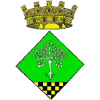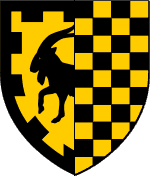|
Castelló De Farfanya
Castelló de Farfanya () is a municipality in the ''comarca'' of the Noguera in Catalonia, Spain. It has a population of . It is home to remains of a medieval castle owned by the Counts of Urgell This is a list of the counts of Urgell, a county of the Principality of Catalonia in the 10th through 13th centuries. {{circa, 798–870 Counts appointed by the Carolingians *798–820 Borrell, count of Urgell and Cerdanya *820–824 Aznar Ga .... References * Panareda Clopés, Josep Maria; Rios Calvet, Jaume; Rabella Vives, Josep Maria (1989). ''Guia de Catalunya'', Barcelona: Caixa de Catalunya. (Spanish). (Catalan). External linksOfficial websiteGovernment data pages Municipalities in Noguera (comarca) Populated places in Noguera (comarca) {{Lleida-geo-stub ... [...More Info...] [...Related Items...] OR: [Wikipedia] [Google] [Baidu] |
Municipalities Of Catalonia
Catalonia is (as of 2018) divided into 947 Municipalities of Spain, municipalities. Each municipality typically represents one significant urban settlement, of any size from village to city, with its surrounding land. This is not always the case, though. Many municipalities have merged as a result of rural depopulation or simply for greater efficiency. Some large urban areas, for example Barcelona, consist of more than one municipality, each of which previously held a separate settlement. The Catalan government encourages mergers of very small municipalities; its "Report on the revision of Catalonia's territorial organisation model" (the ""), published in 2000 but not yet implemented, recommends many such mergers. Larger municipalities may sometimes grant the status of ''minor local entity, decentralised municipal entity'' (, ) to one or more of its settlements, for more effective provision of services or to substitute for its previous status as a separate municipality. Each m ... [...More Info...] [...Related Items...] OR: [Wikipedia] [Google] [Baidu] |
Municipalities Of Spain
The municipality (, , , , , )In other languages of Spain: *Catalan language, Catalan/Valencian (), grammatical number, sing. . *Galician language, Galician () or (), grammatical number, sing. /. *Basque language, Basque (), grammatical number, sing. . *Asturian language, Asturian (), grammatical number, sing. . is one of the two fundamental territorial divisions in Spain, the other being the Provinces of Spain, provinces. Organisation Although provinces of Spain, provinces are groupings of municipality, municipalities, there is no implied hierarchy or primacy of one over the other. Instead the two entities are defined according to the authority or jurisdiction of each (). Some autonomous communities also group municipalities into entities known as ''comarcas of Spain, comarcas'' (districts) or ''mancomunidades'' (commonwealths). The governing body in most municipalities is called ''Ayuntamiento (Spain), ayuntamiento'' (municipal council or municipal corporation, corpora ... [...More Info...] [...Related Items...] OR: [Wikipedia] [Google] [Baidu] |
Algerri
Algerri () is a municipality in the ''comarca'' of Noguera, in the province of Lleida, Catalonia, Spain. It has a population of . Agriculture is a principal economy activity, dedicated mainly to dryland farming. Cultivation of cereals, olives, almonds and sheep husbandry Sheep farming or sheep husbandry is the raising and breeding of domestic sheep. It is a branch of animal husbandry. Sheep are raised principally for their meat ( lamb and mutton), milk (sheep's milk), and fiber (wool). They also yield sheepskin ... are of importance. References External linksOfficial website Government data pages Municipalities in Noguera (comarca) Populated places in Noguera (comarca) {{Lleida-geo-stub ... [...More Info...] [...Related Items...] OR: [Wikipedia] [Google] [Baidu] |
Albesa
Albesa () is a municipality in the ''Catalonia/Comarques, comarca'' of Noguera (comarca), Noguera, in the province of Lleida, Catalonia, Spain. It has a population of . In 1003 it was the seat of the battle of Albesa. The economy is mostly based on agriculture (fruit, potato, tomato), taking advantage of the presence of an acequia. Sights include the parish church of St. Mary (18th century), with a 14th-century retablo, and the remains of the ancient castle (conquered by the Christians in 1098) and of several ancient Roman villas. Notable natives *Fred Albesa, Commander, United States Navy. *Ignasi Segarra i Banyeres, priest of Opus Dei prelature. *Fermí Palau i Casellas, teacher, politician and poet. References External links * Government data pages Municipalities in Noguera (comarca) Populated places in Noguera (comarca) {{Lleida-geo-stub ... [...More Info...] [...Related Items...] OR: [Wikipedia] [Google] [Baidu] |
Menàrguens
Menàrguens () is a municipality in the ''comarca'' of Noguera, in the province of Lleida, Catalonia Catalonia is an autonomous community of Spain, designated as a ''nationalities and regions of Spain, nationality'' by its Statute of Autonomy of Catalonia of 2006, Statute of Autonomy. Most of its territory (except the Val d'Aran) is situate ..., Spain. It has a population of . References External links Government data pages Municipalities in Noguera (comarca) Populated places in Noguera (comarca) {{Lleida-geo-stub ... [...More Info...] [...Related Items...] OR: [Wikipedia] [Google] [Baidu] |
Balaguer
Balaguer () is the capital of the ''comarca'' of Noguera, in the province of Lleida, Catalonia, Spain. It is located by the river Segre, a tributary to the Ebro. The municipality includes an exclave to the east. Balaguer also has a sister city in the western United States, Pacifica, California. It has a population of . Balaguer was conquered from the Moors by Ermengol VI of Urgell in 1106; he made it his new capital, and it remained so for subsequent counts of Urgell. A Jewish community existed in Balaguer from the 11th century to the expulsion of the Jews in 1492. The town has a Gothic bridge, the "Pont de Sant Miquel", over the Segre river. This bridge was destroyed during the Spanish Civil War in the battle of "Cap de Pont" when Francisco Franco's forces first entered Catalonia from Aragon in 1938 through Balaguer's bridgehead. The historic town is on the right bank of the Segre but, following the war, construction began on a modern bridge, which initiated development of ... [...More Info...] [...Related Items...] OR: [Wikipedia] [Google] [Baidu] |
Os De Balaguer
Os de Balaguer () is a municipality in the ''comarca'' of Noguera, in the province of Lleida, Catalonia, Spain. It has a population of . Economy is based on agriculture, with, in particular, the cultivation of vegetables, cereals and olive, and on animal husbandry as well. Sights in the municipality include the rock paintings of Balma dels Vilars (included in the UNESCO World Heritage List and the former Augustianian monastery of Santa Maria de Bellpuig de les Avellanes. Os de Balaguer was the birthplace of Gaspar de Portolá (1716–1784), governor of Baja and Alta California (1767–1770), explorer and founder of San Diego and Monterey Monterey ( ; ) is a city situated on the southern edge of Monterey Bay, on the Central Coast of California. Located in Monterey County, the city occupies a land area of and recorded a population of 30,218 in the 2020 census. The city was fou .... The municipality is split into two parts, the bigger north-western part containing th ... [...More Info...] [...Related Items...] OR: [Wikipedia] [Google] [Baidu] |
Count Of Urgell
This is a list of the counts of Urgell, a county of the Principality of Catalonia in the 10th through 13th centuries. {{circa, 798–870 Counts appointed by the Carolingians *798–820 Borrell, count of Urgell and Cerdanya *820–824 Aznar Galíndez I, count of Aragon, was given Borrell's counties while he was exiled from Aragon *824–834 Galindo Aznárez I *834–848 Sunifred I *848–870 Solomon (or Miró) 870–992 Counts from the House of Barcelona *870–897 Wilfred the Hairy, Count of Barcelona, Girona-Osona and Urgell-Cerdanya *898–948 Sunifred II *948–966 Miró de Barcelona, born c. 940 *966–30 September 992 Borrell II, count of Barcelona, Girona, Osona 992–1213 Counts from the House of Barcelona-Urgell *992 – 1 September 1010 Ermengol I ''el de Còrdova'' ("of Cordoba"), born 975, killed in battle at Córdoba in 1010 *1010–1038 Ermengol II ''el Peregrí'' ("the Pilgrim"), born 1009, died on pilgrimage to Jerusalem, 1038 *1038–1065 Erm ... [...More Info...] [...Related Items...] OR: [Wikipedia] [Google] [Baidu] |
Catalonia
Catalonia is an autonomous community of Spain, designated as a ''nationalities and regions of Spain, nationality'' by its Statute of Autonomy of Catalonia of 2006, Statute of Autonomy. Most of its territory (except the Val d'Aran) is situated on the northeast of the Iberian Peninsula, to the south of the Pyrenees mountain range. Catalonia is administratively divided into four Provinces of Spain, provinces or eight Vegueries of Catalonia, ''vegueries'' (regions), which are in turn divided into 43 Comarques of Catalonia, ''comarques''. The capital and largest city, Barcelona, is the second-most populous Municipalities in Spain, municipality in Spain and the fifth-most populous List of metropolitan areas in Europe, urban area in the European Union. > > > ''Catalonia'' theoretically derived. During the Middle Ages, Byzantine Empire, Byzantine chroniclers claimed that ''Catalania'' derives from the local medley of Goths with Alans, initially constituting a ''Goth-Alania''. Othe ... [...More Info...] [...Related Items...] OR: [Wikipedia] [Google] [Baidu] |
Institut D'Estadística De Catalunya
The Statistical Institute of Catalonia (in Catalan: Institut d'Estadística de Catalunya, usually referred to by its acronym IDESCAT) is the official body responsible for collecting, processing, and disseminating statistics in the autonomous community of Catalonia, Spain. The institute comes under the Department of the Economy and Finances of the Generalitat de Catalunya (Government of Catalonia). Its offices are on Via Laietana, Barcelona. It operates under the Ministry of Economy and Finance of the Catalan government and provides data essential for regional planning, economic analysis, and decision-making across various sectors. History The Statistical Institute of Catalonia was officially established in 1989, marking a pivotal moment in the evolution of regional statistics in Spain. Its creation was rooted in the Statute of Autonomy of Catalonia, which aimed to empower the region with greater self-governance and autonomy over various domains, including statistics. Prior to ... [...More Info...] [...Related Items...] OR: [Wikipedia] [Google] [Baidu] |
List Of Sovereign States
The following is a list providing an overview of sovereign states around the world with information on their status and recognition of their sovereignty. The 205 listed states can be divided into three categories based on membership within the United Nations System: 193 member states of the United Nations, UN member states, two United Nations General Assembly observers#Current non-member observers, UN General Assembly non-member observer states, and ten other states. The ''sovereignty dispute'' column indicates states having undisputed sovereignty (188 states, of which there are 187 UN member states and one UN General Assembly non-member observer state), states having disputed sovereignty (15 states, of which there are six UN member states, one UN General Assembly non-member observer state, and eight de facto states), and states having a political status of the Cook Islands and Niue, special political status (two states, both in associated state, free association with New ... [...More Info...] [...Related Items...] OR: [Wikipedia] [Google] [Baidu] |
Generalitat Of Catalonia
The Generalitat de Catalunya (; ; ), or the Government of Catalonia, is the institutional system by which Catalonia is Self-governance, self-governed as an autonomous communities of Spain, autonomous community of Spain. It is made up of the Parliament of Catalonia, the President of the Government of Catalonia, and the Executive Council of Catalonia (or council of ministers, also very often referred to as ''Govern'', "Government"). Its current powers are set out in the Statute of Autonomy of Catalonia of 2006. The origins of the Generalitat are in the 13th century when permanent councils of deputies (deputations) were created to rule administration of the Courts of the different realms that formed the Crown of Aragon which gave birth to the Deputation of the General of the Principality of Catalonia (1359), the Deputation of the General of the Kingdom of Aragon (1362) and the Deputation of the General of the Kingdom of Valencia (1412). The modern Generalitat was established in 1931, ... [...More Info...] [...Related Items...] OR: [Wikipedia] [Google] [Baidu] |


